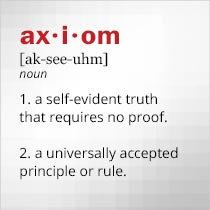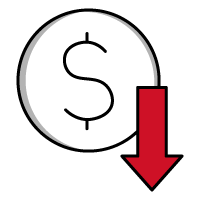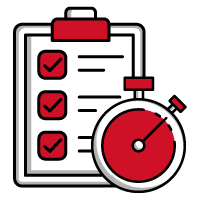Tracing a History of Test Solutions
July 02, 2019
 |
Test instruments have been an integral part of American electronic product development for over a century. Since pioneering telegraph/radio work by Guglielmo Marconi in the late 19th century through war-time efforts accelerated by the battlefield requirements of World Wars I and II for radio, sonar, and radar systems, electronics technology has grown into the mammoth global industry that now serves much of the world’s population with electronic devices of one kind or another. And many of those devices would not be designed, developed, or maintained if not for the creative efforts of innovative engineers at leading test equipment manufacturers, such as Amplifier Research (www.arworld.us), Chroma Systems Solutions (www.chromausa.com), Fluke Corp. (www.fluke.com), Keysight Technologies (www.keysight.com), and
Tektronix (www.tek.com). Each of these companies has contributed their share of test solutions to make progress in electronic design possible throughout the past 50 years, and each can be counted upon to provide measurement techniques and methods that enable advances in electronics well into the future.
Fluke Corp., which began life as the John Fluke Manufacturing Co., may have started humbly as a pioneer in multimeters. But the company has grown from a family business into a family of businesses that supply test instruments to many different markets, including calibration, industrial process control, and medical markets. The company was started by John Fluke in 1948 in Springdale, CT to make different types of electronic measuring meters. Fluke moved back to the state where he was born—Washington--in 1953 and incorporated the company as the John Fluke Manufacturing Company, Inc. He would remain close to a friend and college comrade, David Packard through the years as each would start their own electronics test and measurement company. Fluke named his son, John Jr. the CEO of the company in 1983 prior to his passing away the following year.
What began as a company making rugged and accurate analog multifunction meters for measuring essential electrical parameters such as voltage, current, and power has become a worldwide source for digital multimeters with European base in Eindhoven, The Netherlands. In fact, it is the outstanding performance of multimeters such as the Fluke 287 true-RMS multimeter and the Fluke 87-V high-accuracy true RMS multimeter that help build Fluke’s solid reputation for reliability and accuracy in basic electronic measurements and have made the electronic term “multimeter” almost synonymous with Fluke.
Searching Silicon Valley
For many present-day engineers, it is not far on the test bench before a piece of test equipment from Keysight Technologies can be found. Keysight is well known for their accurate and versatile signal generators and wide variety of signal analyzers. They may be better known, however, for their original company name: the firm began as Hewlett-Packard company in Palo Alto, CA in 1939, not far from where its two founders, William Hewlett and David Packard (or Bill and Dave to those of us old enough to know and remember them), graduated from Stanford University as electrical engineers. The company would go through many changes over the years, starting with audio oscillators that would be sold to a first custom, Walt Disney Productions, for use in the animated film Fantasia. The firm would grow significantly during World War II, developing test instruments for the military that were largely related to radar technology. The co-founders would split management responsibilities after the war, with Hewlett focusing on R & D and Packard running the business side.
As the world recovered from the effects of the war, commercial broadcast radio and television technologies and markets grew, in part with the help of measurements made by a high-speed frequency counter introduced by Hewlett-Packard Co. in 1951. The instrument became a mainstay of agencies such as the Federal Communications Commission (FCC) and with radio and television stations each seeking to carve out their portions of the “airwaves” for public use according to FCC standards.
Hewlett-Packard grew steadily following World War II due to its own innovations in test and measurement equipment but also with the help of the American worker at large, as the company went public and became part of the Stock Market in 1957. The firm would also grow through acquisitions such as the Sanborn Company in 1961, which would establish HP as a developer of precise instruments for medical applications. While Hewlett-Packard Co. would make important technological contributions in the area of precision time-keeping with its development of atomic clocks and other frequency/time references, it may be best known and remembered for its creation of pocket-sized electronic calculators, based on the company’s internal R&D on novel multifunction integrated circuits (ICs). Availability of the compact calculator for a reasonable price would mean the end to the slide rule. For most people in the 1970’s, mention of a pocket calculator usually also had “HP” in the sentence.
In 1999, HP would spin off its test-and-measurement groups into Agilent Technologies, which would continue to create innovative measurement products at all frequencies, from audio through microwaves. Agilent would continue to create and produce electronic products for the medical industry but would eventually spin off the non-medical test groups into Keysight Technologies in 2014. As Keysight, the company has continued to grow as one of the world’s leading suppliers of innovative test-and-measurement instrument hardware and software, including pattern generators, logic analyzers, arbitrary waveform generators, and programmable attenuators.
Just has HP became synonymous with the pocket calculator, Tektronix would become associated with one of the more versatile of electronic measuring instruments, the oscilloscope. The company was started in 1946 by Howard Vollum and Jack Murdock, along with partners Miles Tippery and Glenn McDowell and incorporated that year with headquarters in Portland, OR. They would develop and introduce their famed model 511 oscilloscope the following year. As with many other companies founded after the war, they would benefit from the economic growth following the war, and early commercial interest in the simple model 511 triggering oscilloscope would encourage the development of the more elaborate model 513 oscilloscope with a built-in time base. The company acquired a large piece of property in Beaverton, OR and would make this the headquarters and site of Tektronix Industrial Park in 1959.
In 1961, Tektronix developed and introduced the model 321 oscilloscope, one of the first portable, battery-powered oscilloscopes. The company would continue to innovate in oscilloscope technology with the invention of the model 564 analog storage oscilloscope in 1964. Two years later, it would develop its 400 Series oscilloscopes, with the 16-MHz-bandwidth model 422 and the 50-MHz-bandwidth model 453. Not to be forgotten, especially among RF and microwave engineers, is the company’s place in American history with its development of reliable, portable spectrum analyzers, notably the models 492 and 494 spectrum analyzers.
Today, these and many other U.S. test equipment manufacturers continue to contribute to electronic measurement science by keeping pace with new technologies and applications. Over the past few decades, for example, test instrument innovators have leveraged advances in analog, mixed-signal, and digital ICs to bring dramatic improvements in signal generation and analysis within smaller sizes and at lower power levels. U.S. test equipment manufacturers are readying for what may become a period of unprecedented growth in wireless electronic technologies as “self-driving” autonomous vehicles, Internet of Things (IoT) devices, and Fifth Generation (5G) wireless cellular networks reach the masses worldwide.
If you want to rent or purchase test equipment, please visit Axiom’s website at www.axiomtest.com to view our inventory. If you would like help selecting the right equipment for your project, contact Axiom Test Equipment’s sales department at sales@axiomtest.com, or by calling an Axiom sales representative at 760-806-6600.
Back to BLOG








